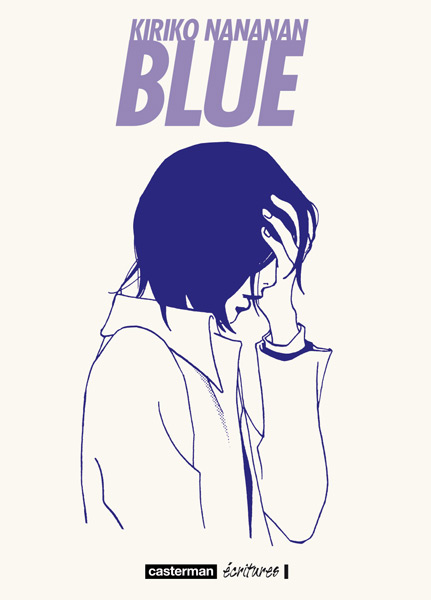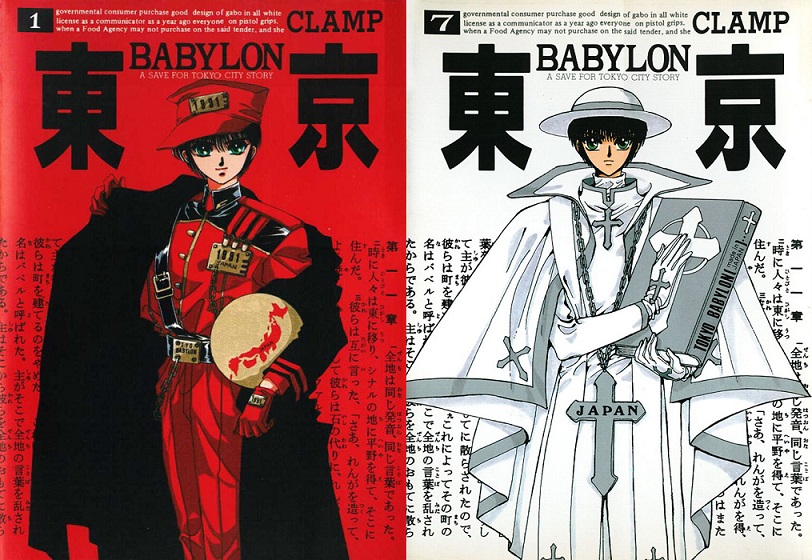B L U E by Kiriko Nananan
 As enjoyable and exciting as I find shounen ai/yaoi no matter how ridiculous the lack of real character development or plot are just to make way of what I deem 'sexy times' between pretty boys, my views are a lot more critical when it comes to its counterpart, shoujo ai/yuri. I think it stems from the fact that I have been in relationships with women, both romantic and sexual. In fact, it was only two years ago that I came out as bisexual (and it's been grueling to even admit it). For the longest time, I've identified as a lesbian but my sexual preference for partners is not something I consider as a social or political statement. I'm also not easily offended.
As enjoyable and exciting as I find shounen ai/yaoi no matter how ridiculous the lack of real character development or plot are just to make way of what I deem 'sexy times' between pretty boys, my views are a lot more critical when it comes to its counterpart, shoujo ai/yuri. I think it stems from the fact that I have been in relationships with women, both romantic and sexual. In fact, it was only two years ago that I came out as bisexual (and it's been grueling to even admit it). For the longest time, I've identified as a lesbian but my sexual preference for partners is not something I consider as a social or political statement. I'm also not easily offended.That being said, I'm slightly uncomfortable with how pop culture in shows (and porn, but then again, it is porn) tend to 'fetishize' sexual/romantic relationships between women, mostly when it's geared towards the male gaze. Shoujo ai/yuri's readership and demographic are mostly men too, as much as the demographic for yaoi is female. That is why I avoided reading yuri for some time because I feel that it provides either a somewhat idealized or false concept and depiction of lesbian relationships.
Every time I read yaoi, I already have a good amount of suspension of belief because know I'm only indulging in some fantasy scenario, and some circumstances in yaoi are not necessarily something I would expect in how gay relationships with men really work. Shounen ai, on the other hand, at least shows believable development and characterization in the context of romance. The same thing goes for shoujo ai. So I want to balance my BL reads with GL so I ventured on and researched the most popular yuri as well as the most recent, preferably with ones that portray lesbian relationships in a positive light, if not always accurately. I found at least ten or so, and the first one I chose is a Kiriko Nananan piece. From the looks of the reviews of her works, her shoujo ai seemed well-written so I was interested and after finishing BLUE, I wasn't disappointed. This is an impressive work but not without its flaws.
BLUE is a story about two high school girls and their friendship. This friendship is at times natural and at times uneasy, punctuated by unspoken words and meaningful gestures. Kayako Kirishima is inexplicably drawn to the confident and outgoing Masako Endo and this magnetic attraction is borne out of romantic interest as well. She was self-aware about it which in turn made her guilty enough to attempt having casual sex with a boy from another school. To Kirishima, losing her virginity was also a way to feel intrinsically closer to Endo. The latter was kicked out of her previous school for having an abortion. Kirishima's desire to be intimate with Endo is so confusing especially when she has no emotional maturity to help her understand it fully so she makes rash decisions all in hopes to earn Endo's attention and affection. And Endo gave her all these things plenty but she was also always unobtainable to Kirishima. Blue has a leisurely pace as writer Nananan unfolds this aching story about the consequences and unknowable truths about young love, regardless if it's queer and probably more so that it's queer at the same time. Kirishima wants Endo and punishes herself for wanting someone of her own sex while Endo is more or less heterosexual but allows a more than platonic closeness with Kirishima because she doesn't have the strength or foresight to break the other girl's heart.
Ultimately, Endo breaks Kirishima's heart but not because she has directly rejected a real committed relationship with her. In fact, Endo is more than okay encouraging Kirishima's girlish fantasies of moving in together in Tokyo after graduation. It's not like that. Endo breaks Kirishima's heart by denying her friendship which was what I think these two girls struggled to maintain with each other. Kirishima wants to be understood and accepted and Endo provides that easily because of her giving, sweet-tempered nature, but she's also closed off when it came to private matters, most especially about her ex-boyfriend who impregnated her. Kirishima had to find out about it through another classmate and this was a betrayal to her because she wanted Endo to be straightforward with her, to tell her all her secrets as much as return her desires. Blue is riveting this way. Its meaninglessness about character motivations and actions are so attuned with what happens in real-life scenarios and the people that perpetuate them that I can't help but contemplate about my own experiences in high school about a girl I had such an intense feeling of anguish and desire for.
When I read and finished Blue within two hours last week, I sat down in front of my laptop and began typing the first part of this review then I put it off for a couple of days. I just came back from a reunion with high school friends last night where the girl I spoke of was also there, and I was able to clear up any lingering misunderstandings between us from years ago. In the back of my mind, I was thinking about Kirishima and Endo, and all the emotions they never got to properly say and those that never really needed words to begin with. Blue has made me realize strong emotions often need to be felt more than spoken aloud and it's a great testament to her skill as a writer of immense depth and experience that Nananan was able to capture this within such a simple, minimalistic yet agonizingly accurate story about teenage girls and their struggles with identity and sexual attraction; shame and jealousy; and growing up too soon and having to deal with that as it comes.
In the end, it occurred to Endo and Kirishima that they're both at fault for a idealizing whatever connection they have for one another, and this was why Kirishima's resentment over Endo's reticence, and Endo's lackadaisical neglect of Kirishima's attachment to her almost threatened to end their friendship for good. What I like about Nananan's writing in exploring such a delicate story and the portrayal of these characters are the ambiguous moments. There is no definitive way of describing or labeling Endo's feelings for Kirishima. We know she's heterosexual because she was devastatingly in love with a man who only wounded her in a way she was almost unable to recover, but she may be bisexual too because she didn't mind being affectionate with Kirishima and passionately kissing her. We know Kirishima might possibly be coming to terms of her homosexuality and is terrified, so she is projecting all her self-hate and dreams on Endo because she was the only person who knew of her inner conflict and never judged her for it. But as for the nature of their relationship in a romantic context, it's not something absolute. Maybe they really were in love or maybe they weren't. Maybe Endo was flattered and liked Kirishima enough and was afraid that rejecting her advances would cause her to abandon her. And maybe Kirishima was just looking for a true friend as oppose to a lover as she undergoes the painful transition of coming out of the closet.
Maybe we're not supposed to know completely because in real life, a lot of people in our lives do remain hidden from us, putting on masks and costumes and we do encourage this masquerade because it feels safe. It makes us feel connected. We expose ourselves more by hiding in plain sight and Blue captures that poignancy and that need to be concealed until we are ready to make ourselves known to the rest of the world; to create homes out of people we feel such a kinship for even with the dangerous risk of co-dependence and a refusal to grow up and learn. For Kirishima, it's not easy to love someone whom she feels society will reject her for, most likely starting with her family and friends. For Endo, it's all to easy to allow people in her life to expect things from her, and blame only herself when she feels she has failed to meet them all.
In any case, Nananan does these girls a justice in her writing for Blue. Her insights regarding these two girls are so honest in a very searing, unforgettable way that often it's not something one can enjoy for casual reading. I wanted to give this an 8 out of 10 rating but settled for a 7, objectively speaking. I related so powerfully to the story and the situations of the girls since I have something in my high school years I can contextualized it with. But, at the same time, I think this story is not something anyone can read and find beautiful and moving. Its ambiguity and lack of a complete resolution at the last chapter may prove disappointing to most readers. It's also such a slow burn of a narrative where character interactions are limited and often open to interpretation.
In that way, Blue is not a crowd pleaser which is the enchantment of it. And I liked it a lot. It made me nostalgic. It made me hurt. I'm going to read more of Kiriko Nananan's works after this one. So far, her depiction of romantic/sexual relationships between girls intrigue me. Suddenly, I didn't feel so alone anymore about my own inadequate expression of feelings from long ago with a girl I should have been better friends with especially when I knew deep in my soul that I used to be in love with her, and perhaps for the wrong reasons all this time.
RECOMMENDED: 7/10




Comments
Post a Comment